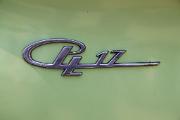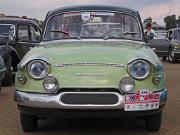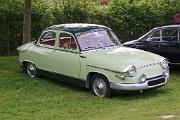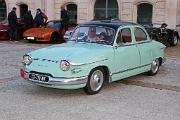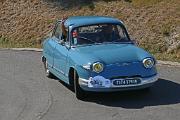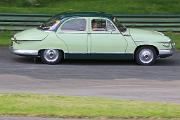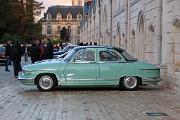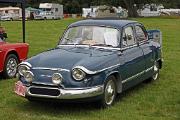
Panhard PL17 L1 1960 frontb
Panhard PL17 L1 1960. This is the original PL17, the centre of the body carried over from the Dyna Z, and still has the suicide front doors.
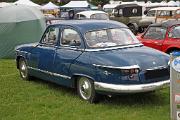
Panhard PL17 L1 1960 rear
Panhard PL17 L1 1960. This is the original PL17, the centre of the body carried over from the Dyna Z, and still has the suicide front doors. The rear lamps are triple lens units and bumpers are plain forms.
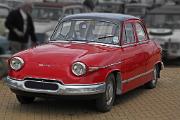
Panhard PL17 L7 1963 Tigre front
Panhard PL17 L7 1963 Tigre. Introduced in 1959 the PL17 replaced the Dyna Z and originally had an 851cc flat twin air-cooled engine, but in 1963 a newer 848cc engine offered 50bhp (or 60bhp for this 'Tigre' version). For 1963 the L6 model got modest restyling, with the front indicators fitted to the side of the headlamps, and an extended roofline.
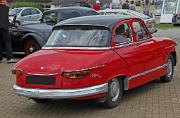
Panhard PL17 L7 1963 Tigre rear
Panhard PL17 L7 1963 Tigre. For 1963 the PL17 is given an extended rear roof line and lip over the rear window resulting in more head room for rear seat passengers. Ribbed bumpers are now fitted.
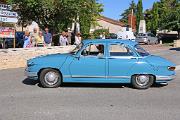
s Panhard PL17 L6 1963 side
Panhard PL17 1963 L6. The L6 version announced in 1963 had revisions front and rear and an extended roofline to give more headroom in the back seats.
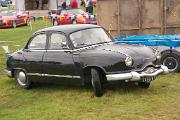
Panhard Dyna Z1 1956 front
Panhard Dyna Z 1956. Panhard gave its Dyna X an 851cc flat twin air-cooled engine which was gradually uprated, achieving 50bhp for the 1958 Tigre model.
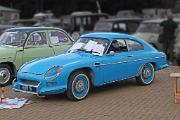
D-B HBR5 1959 front
Deutsch et Bonnet (D-B) HBR5 1959.
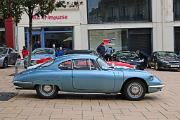
s Panhard CD Rallye 1965 side
Panhard CD Rallye 1965. Charles Deutsch (of Deutsch et Bonnet) developed the CD Rallye from his design for the CD Dyna Le Mans car. This was designed with aerodynamicist Lucien Romani and Marcel Hubert for the 1962 24 heures du Mans. The production Panhard CD achieved a drag coefficient of 0.22.
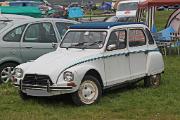
Citroen Dyane 6 1982 front
Citroen Dyane 6 1982 Cote d-Azur.. Starting as a project to redesign the Citroen 2CV, the design was given to the newly acquired Panhard design time under the leadership of Louis Bionier. Citroen's own Jacques Charreton altered the design of the 'Projet AY' somewhat. Named 'Dyane', possibly as a reference to the Panhard Dyna and Dynamic models, or maybe a reference to a Goddess ('DS' is a pun on 'Deesse' - the word for Goddess), the Citroen Dyane was launched at the 1967 Paris Salon.
All images and content of this site is the copyright of Simon GP Geoghegan
